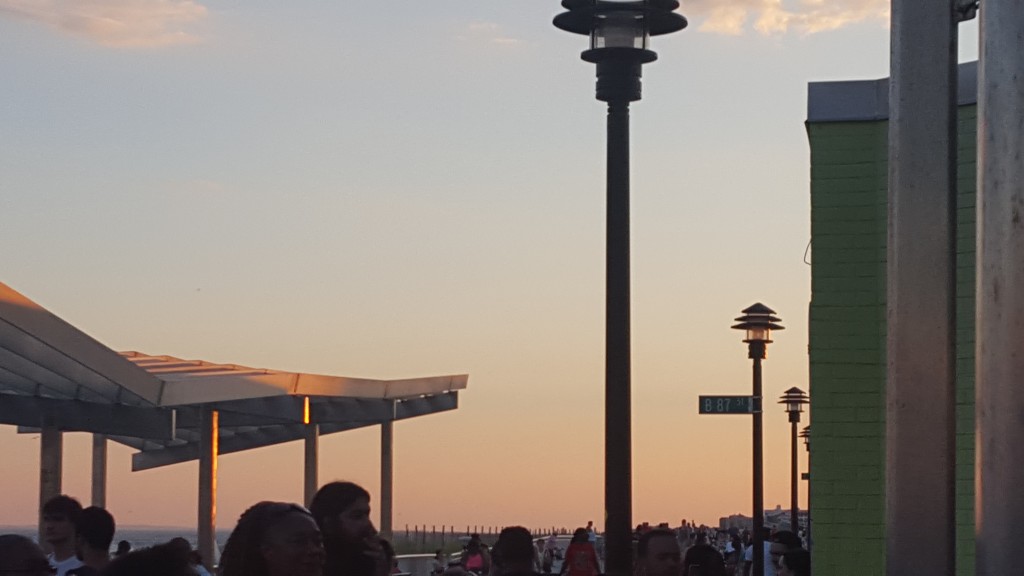 I’ve been going to Rockaway Beach for over 20 years but this year I noticed something different– a much more diverse group of individuals. Beyond the fact that New York City is a diverse city, at the beach I’ve been hearing a lot more French, Spanish, Polish, and German (just a few of the ones I could identify). And also I’ve met people who come from all across the U.S. (Missouri, California, Georgia) and now call New York City their home.
I’ve been going to Rockaway Beach for over 20 years but this year I noticed something different– a much more diverse group of individuals. Beyond the fact that New York City is a diverse city, at the beach I’ve been hearing a lot more French, Spanish, Polish, and German (just a few of the ones I could identify). And also I’ve met people who come from all across the U.S. (Missouri, California, Georgia) and now call New York City their home.
This past weekend as I sat under the tent, enjoying the beach breeze, watching the surfers catch some waves, and reading my current book, “The Life and Selected Writings of Thomas Jefferson,” I overheard a group next to me talking about American culture. I was quickly intrigued and began listening. One of the guy’s in the group said, “American culture now is just the addition of other cultures.” It got me thinking.
Is American culture an addition of other culture like the guy at the beach said? A melting pot? A salad bowl? A stew? A soup? What is American culture?
For me, I believe there is no one answer. And if one answer must be given I’ll say American culture is multicultural. There are many variables that make up the American culture – including location, gender, age, sexual orientation, race, ethnicity, socio-economic level, and political views, just to name a few. So by definition, American culture is different culture within one – consisting of different passion points, interests, and views. (Suggested reading: BusinessInsider.com article about Colin Woodward’s latest book, “American Nations: A History of the Eleven Rival Regional Cultures in North America.”)
In my experience, brands must look beyond ethnicity, race and language to relate to consumers. As marketers, it’s our duty to provide those insights, and we can do that by:
- Becoming cultural anthropologists. Cultural anthropology is the study of human cultures, their beliefs, practices, values, ideas, technologies, economies and other domains of social and cognitive organization. By becoming cultural anthropologist, we start to ask deeper questions to understand the lives of the consumers. In the Mad Men era, branding was what consumer should aspire to be, who they should become. In today’s era of individual expression, we must watch closer, listen deeper, and ask more to identify who truly are our brand’s key consumers.
- Testing for Hidden Biases. We’re all humans and have had different life experiences, and some judge others. For this reason, we must understand our hidden biases so that can better immerse ourselves in understanding consumers. They live differently than we do. They make decisions differently than we do. Our job is to understand them without judgement, finding the connecting points.
- Learning about the different media channels in the U.S. A brand’s key consumer can overlap in the type of media read on a daily basis. This is why it’s important to understand the specific content the different media outlets and contacts write about. For example, an outlet may be written for English-speaking Hispanics (like Latina.com) but fashion and style is a key content. If you have a new product, share with the fashion and style editors at Latina.com. You’re tapping to an audience based on shared interests, not language or cultural preference.


